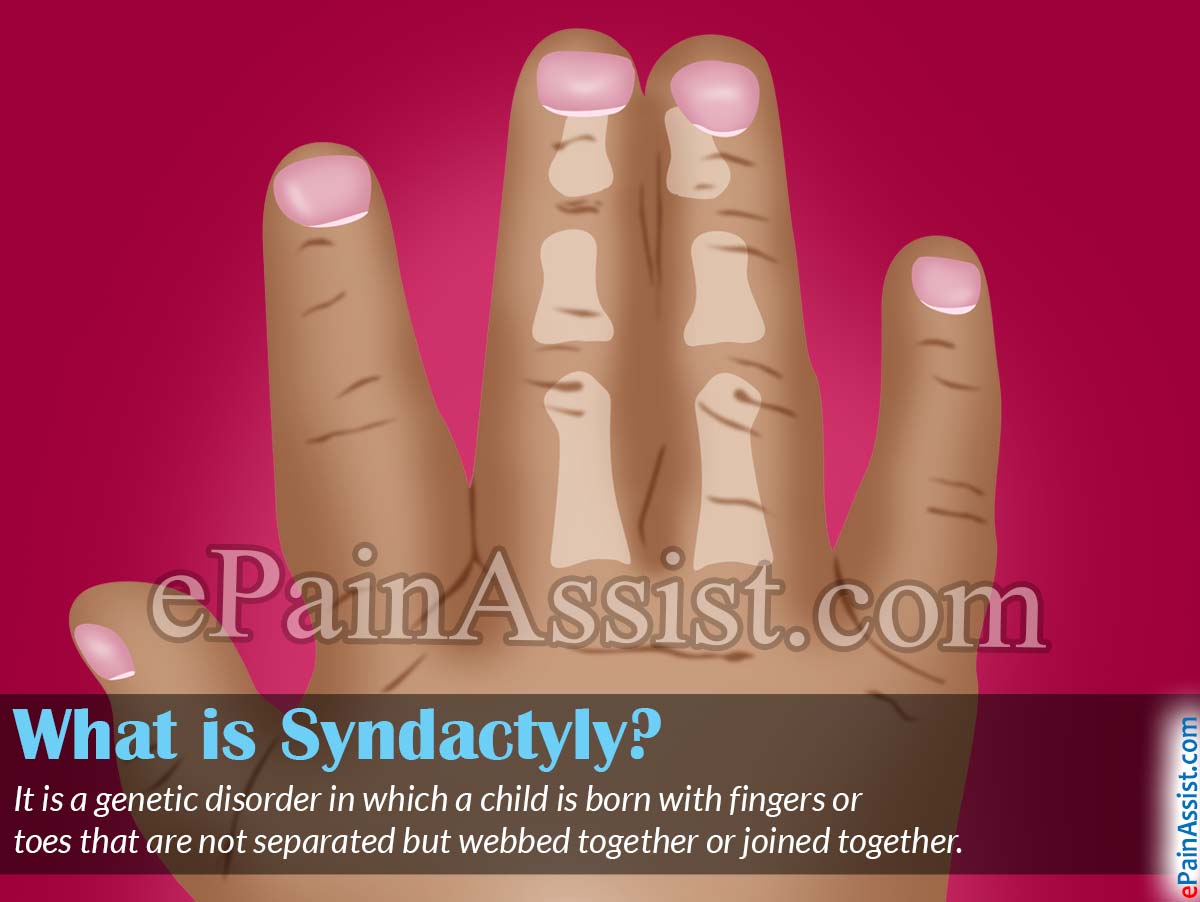What is Syndactyly?
Syndactyly is a genetic disorder in which a child is born with fingers or toes that are not separated but webbed together or joined together.1 Syndactyly is one of the most common birth defects and more often than not runs in families. This condition is more common in boys than girls. Syndactyly usually affects both the hands at the same time and is seen to occur between the middle and the ring fingers.

This condition does not have a notable cause and may occur in isolation or is inherited. Syndactyly may also occur in association with some other genetic disorders like the Apert Syndrome or Poland Syndrome.2 Syndactyly can be detected prenatally if there is a family history of this condition by conducting an ultrasound. Syndactyly is treated mostly with surgery, but the exact course of treatment is formulated by the physician after studying radiologic studies and conducting other studies of the child and the surgery needs to be done by the time the child is one year of age for optimum results.
What is the Cause of Syndactyly?
Syndactyly is quite a common condition and is present in about 20% of the children born in which it affects in one hand in about half of them and the remaining being affected in both the hands. Studies suggest that Caucasians are most likely to get Syndactyly than others. Although the root cause of Syndactyly is not known but studies suggest that during the sixth or seventh week of pregnancy when the fingers are separating from each other there is some sort of abnormality that occurs which results in the fingers not getting separated and being fused or webbed together.
Forms of Syndactyly
Based on studies, Syndactyly has been classified into four forms, the first of which is the complete form in which the webbing extend all the way to the fingertips. Then there is the incomplete form in which the webbing does not cover the entire finger. The third form is the simple form of Syndactyly in which the fingers are just joined together by a flap of skin or soft tissue and then there is the complex form of Syndactyly in which there is presence of bone and cartilage along with soft tissue in the webbing and then the most severe or the complicated form of Syndactyly in which the fingers are joined together by bone, cartilage, tendons, and soft tissues which are the most difficult ones to treat.
What are the Symptoms of Syndactyly?
Syndactyly is a defect which is quite visible at birth although it can be detected prenatally by an ultrasound. This is especially helpful for those parents where there is a family history of this condition.
How is Syndactyly Diagnosed?
As stated, Syndactyly is a visible deformity and can be visualized easily at birth.3 Once the webbing is seen, the physician will conduct detailed radiological studies in the form of x-rays or MRI scan to look at the internal structures of the affected fingers to formulate a treatment plan and how to best treat the child.
What is the Treatment for Syndactyly?
The best way to treat children with Syndactyly is to release the webbing that joins two fingers together. This is easiest if the fingers are webbed or joined by just a flap of soft tissue with no bones or cartilage involved. The procedure is done by the time the child is one year of age for best results. The surgical treatment for Syndactyly is called as Z-plasty in which the skin is split in a haphazard fashion in the form of the letter Z. At a time, only one side of the finger is separated in order to avoid complications postsurgery. In some cases more than one procedure may be required for best results. Rarely, there are any complications related to surgery for Syndactyly but some of the complications include:

- Recurrence of Syndactyly
- Inadequate blood supply to the affected finger
- Scar contractures
- Nail plate deformity
What is the Prognosis of Syndactyly?
The overall prognosis for Syndactyly is fortunately quite good and most of the children have normal function of the hands when they grow up. There is also minimal deformity seen in the fingers that have been split and hence appearance also is almost normal. The child will need to have close followups for a period of a few months to make sure that the healing process is adequate, the function is normal in the affected finger with adequate supply of blood, and to see if any additional surgery is required for correctional measures due to Syndactyly.
